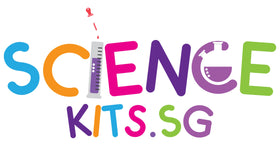
Navigating the Middle School Years: Tips for Teachers to Support Student Growth
1. Foster a Supportive Classroom Environment
Creating a classroom environment where students feel safe and valued is essential:
- Build Positive Relationships: Take the time to get to know your students. Show genuine interest in their lives and create opportunities for them to share their thoughts and feelings.
- Establish Clear Expectations: Set clear and consistent classroom rules. Ensure that students understand the expectations for behavior and academic performance.
2. Emotional and Social Development
Middle school students are navigating complex emotional and social changes:
- Encourage Open Communication: Provide a space for students to express their emotions and concerns. Be an active listener and offer guidance when needed.
- Promote Social Skills: Integrate activities that build teamwork, empathy, and conflict resolution skills. Encourage positive peer interactions and foster a sense of community.
3. Support Academic Growth
Academic challenges are common during middle school:
- Differentiate Instruction: Recognize that students have diverse learning styles and needs. Use a variety of teaching methods and materials to accommodate different learners.
- Encourage Organization: Help students develop organizational skills, such as using planners or digital tools to keep track of assignments and deadlines.
4. Promote Independence and Responsibility
Encouraging independence helps students develop important life skills:
- Set Realistic Goals: Work with students to set achievable academic and personal goals. Break larger tasks into smaller, manageable steps to build confidence.
- Encourage Self-Advocacy: Teach students how to seek help and advocate for their needs. Empower them to take responsibility for their learning and personal growth.
5. Engage with Parents and Guardians
Collaboration with parents and guardians enhances student support:
- Maintain Open Communication: Regularly update parents on their child’s progress and any concerns. Use various methods, such as newsletters, emails, or parent-teacher conferences.
- Encourage Involvement: Invite parents to participate in classroom activities or volunteer opportunities. Encourage them to support their child’s learning at home.
6. Integrate Social-Emotional Learning
Incorporate social-emotional learning (SEL) into the curriculum:
- Teach SEL Skills: Include lessons on self-awareness, self-regulation, and relationship-building. Use activities and discussions to help students develop these skills.
- Model Positive Behavior: Demonstrate the SEL skills you want to see in your students. Your behavior sets a powerful example for them to follow.
7. Address Individual Needs
Recognize and support the unique needs of each student:
- Identify Learning Challenges: Pay attention to students who may struggle with learning or behavioral issues. Collaborate with school counselors or special education staff to provide additional support.
- Celebrate Diversity: Acknowledge and respect the diverse backgrounds and experiences of your students. Use inclusive practices to ensure that all students feel represented and valued.
8. Encourage Extracurricular Participation
Extracurricular activities contribute to well-rounded development:
- Promote Involvement: Encourage students to participate in clubs, sports, or other extracurricular activities. These experiences can help them build skills, develop interests, and form friendships.
- Support Balancing Activities: Help students manage their time effectively to balance academic responsibilities with extracurricular interests.
Conclusion
Supporting middle school students through their developmental journey requires a combination of empathy, strategic planning, and effective communication. By fostering a supportive environment, addressing emotional and social needs, and promoting academic and personal growth, you can make a significant impact on your students’ success and well-being. Your guidance and support during these formative years will help them navigate the challenges of adolescence and build a strong foundation for their future.
